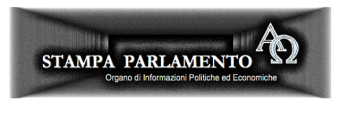Banca d’Italia and SUERF workshop
‘The effectiveness of monetary policy in a low interest rate environment’.
Welcome address by Daniele Franco
Senior Deputy Governor of the Bank of Italy Rome, 18 November 2020
I am happy to welcome you all to the Banca d’Italia and SUERF’s joint Workshop on ‘The effectiveness of monetary policy in a low interest rate environment’.
As you may know, we had scheduled this workshop to take place in June, but we had to postpone it, because of the pandemic. We also had to move to a virtual setting and rely on video connections.
The workshop addresses issues that are now at the top of policymakers’ agendas around the world. The pandemic has led to the worst recession in recent history, and the scars that it will leave on the global economy are likely to prolong the low interest rate environment. Monetary policy is playing a key role in supporting the recovery and its contribution will remain fundamental in the coming years. The discussion on strategies, targets and tools remains open.
Today and tomorrow, we will have the opportunity to embark on a wide-ranging debate on the challenges ahead. In my remarks today, I will touch upon a few of them.
To begin with, I think we can all agree that the pandemic crisis has further exacerbated the effects of some ongoing long-term trends. Some of these trends have already been in place since the Great Financial Crisis and its aftermath. I am mostly referring to the drop in the natural rate of interest1 and to the subdued inflation dynamics. These trends are due to structural changes in macroeconomic relationships and imply a need both to reassess theoretical frameworks and to review the monetary policy strategy and tools.
In this respect, the first session deals with monetary policy strategy in such a low interest rate environment. This of course calls into question the issue of the appropriateness of the current inflation target, which is indeed one of the main items on the table in the Eurosystem’s monetary policy Strategy Review. I will not comment further on the Strategy Review, since it is still ongoing.
Another important theme in the “post-pandemic” environment will be the interaction between fiscal and monetary policy. As we know, fiscal policy worldwide was boldly expansionary during the most acute phase of the pandemic crisis. In the EU, an unprecedented joint response of Member States will contribute significantly to the recovery in the years to come.
In the current circumstances, a sizeable fiscal stimulus is necessary, in order to sustain aggregate demand. However, that very same stimulus raises new challenges, as it will result in a record increase in public debts around the globe.
Although I firmly dismiss the risks of fiscal dominance, nevertheless monetary policy cannot ignore the impact of fiscal policy, as is made clear by the second paper of the session.
These considerations take me to tomorrow’s first session, which will focus on ‘structural changes’ in monetary policy transmission. Indeed, the historically high levels of public and private debt may well have an impact on the transmission of monetary policy through channels such as the interest rate exposure,2 which in the current environment may lead to significant wealth and income effects.
One could argue that high levels of debt boost the monetary policy transmission mechanism via a ‘leverage’ effect, but at the same time generate the risk of higher volatility and, ultimately, may have financial stability implications.
The repayment of this high debt burden is currently being made easier by the low nominal interest rates regime, an aspect emphasized by Olivier Blanchard in his AEA presidential lecture last year.3 However, the persistence of low medium- and long-term interest rates cannot be taken for granted. Moreover, episodes of financial turmoil, due to market perceptions or to a change in fundamentals, can happen, creating a negative feedback loop between market expectations and macroeconomic fundamentals.
This allows me to touch upon the topic of the instruments of monetary policy, which will be the focus of the concluding session of the workshop. The unconventional policies adopted by central banks around the world in the last decade have proved effective, as a copious amount of evidence suggests.4 The experience gained with the new monetary policy tools in the last decade must guide our choice of the unconventional instruments that central banks should retain in their toolbox.
Auclert, (2019) ‘Monetary Policy and the Redistribution Channel’. American Economic Review,
109 (6): 2333-67.
- Blanchard, (2019) ‘Public Debt and Low Interest Rates’. American Economic Review, 109 (4): 1197-1229.
- For a review of the research on unconventional monetary policies carried out at the Bank of Italy, see Neri, S. and S. Siviero (2019) ‘The non-standard monetary policy measures of the ECB: motivations, effectiveness and risks’. Banca d’Italia, Occasional Paper
Undoubtedly, many of the instruments deployed in recent years will remain in use in the near future. At the same time, we are now better equipped than in the past to mitigate the undesired side effects of some instruments, as in the case of the two-tier mechanism for the remuneration of excess reserves.
A final point that I would like to touch upon concerns the governance of economic research at the present time.
Economic research is part of the monetary policy toolbox. Sound economic research is a precondition for the independent assessment of the most appropriate monetary policy stance.
As Governor Visco remarked (2016), ‘monetary policy cannot wait until sufficient information accumulates that may cast full light on the new mechanisms at work’.5 This issue has been evident in recent years, when we all faced the great challenge of ‘conduct[ing] both policy and research in real time’, as the former ECB President Draghi once said.6 Precisely because of that, timely and high quality economic research has become increasingly important within central banks, since there is a compelling need to assess the impact of new policies as they are deployed. In this respect, I see two main challenges for central banks in the coming years.
First, in the face of the great uncertainties on the shape, timing and features of the recovery ahead, we must keep producing research in ‘real time’, making use of a broad range of modelling tools and of more sophisticated datasets.
Secondly, our research should not only be timely, but also seek the highest quality standards. Quality is needed to make policy credible for both experts and the general public alike. Clarity in communicating our results is also crucial. At the same time, the complexities of the current economic environment urge us to keep enlarging the range of research topics covered, in order to better understand the drivers of the structural changes affecting the real economy as well as financial markets.
In light of the above, it is of the utmost importance to strengthen international collaboration with other central banks, universities, think tanks and industrial bodies in order to generate and nurture new and better ideas. We are therefore delighted that this workshop has been co-organized by Banca d’Italia together with SUERF. Through a wide range of events and publications bridging research and policy, SUERF is an outstanding meeting point for the profession to foster a fruitful dialogue between central banks, financial sector practitioners and academic institutions.
We can now start delving into the core topics of our research workshop. We do so with one of the most prominent and renowned researchers in macroeconomic theory, monetary economics and monetary policy.
I am delighted to introduce our keynote speaker, Professor Jordi Galí: professor at Universitat Pompeu Fabra and at the Barcelona Graduate School of Economics; director of the Center for Research in International Economics; and research fellow or research associate at the CEPR, NBER, Econometric Society and European Economic Association.
He is very well known in the central banking community for his groundbreaking contributions to dynamic macroeconomic models, the determinants of inflation and the conduct of monetary policy.
We are looking forward to his insights. Jordi, the floor is yours.
Designed by the Printing and Publishing Division of the Bank of Italy









 Attendere un attimo...
Attendere un attimo...


